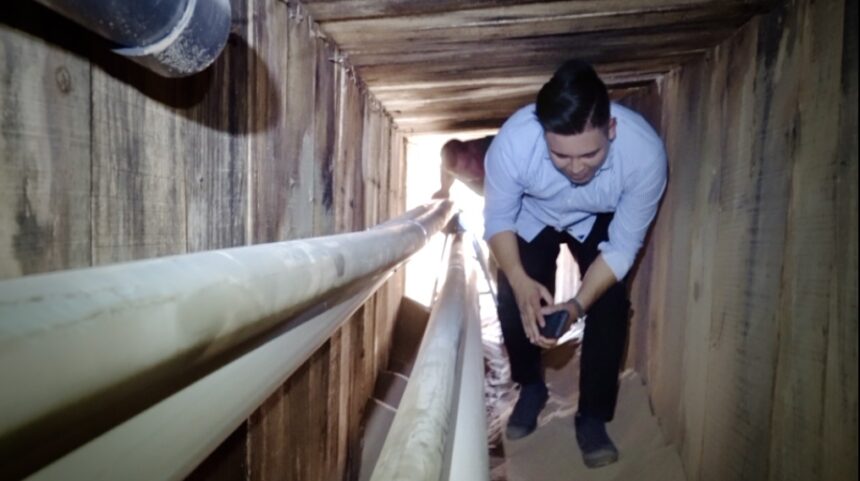SPECIAL REPORT: Beneath the border

Inside one of the most sophisticated cross-border tunnels in U.S. history. News 11's Gabe Salazar reports.
SAN LUIS, Ariz. (KYMA, KECY) - U.S. Immigration and Customs Enforcement discovered an unfinished cross-border tunnel in a residential area in San Luis, Ariz., located about 25 miles from Yuma.
This is the sixth cross-border funnel discovered in the desert southwest in a span of 15 years, and authorities have deemed it "one of the most sophisticated cross-border tunnels ever found."
Vincent Dulesky, Public Information Officer for the Yuma Sector, says that the tunnel was intended for smuggling and ran from a neighborhood in San Luis Río Colorado, Mexico, to San Luis, Ariz., where it stopped short of reaching the surface.
"It had a ventilation system, water lines, electrical wiring, a rail system, and the ground was completely finished," says Dulesky.
The tunnel was found in an area with very loose sand, so when agents first discovered the tunnel, they had difficulty digging it because it would end up caving.
Homeland Security Investigations (HSI) excavated the tunnel in July after agents responded to reports of a sinkhole near the border wall.
Dulesky says the tunnel could have been used for drug smuggling or human trafficking. However, they do not know how long it had been there or what equipment was used to build it.
Authorities believe if it was done by hand it would have taken many months of construction.
About two years ago, Yuma authorities discovered another drug-smuggling tunnel that went from a home in Mexico to an abandoned Kentucky Fried Chicken (KFC) in San Luis, Ariz.
HSI said the tunnel ran from Mexico to an old KFC restaurant that's not in operation in San Luis, Ariz., just about 200 yards north of the border.
The owner, Ivan Lopez, was arrested on Aug. 13, 2018, after authorities found several packages of methamphetamine, cocaine, heroin, and fentanyl in the back of his truck.
That arrest led to a search at his home and the old restaurant, where agents found a hidden tunnel that was large enough for people to walk through freely.
The coronavirus pandemic has changed the way agents at the Yuma Sector do their jobs and the process of apprehending undocumented immigrants.
“So what we’ll do is we’ll grab some biological information from them, make sure they’re not criminals or anybody that can harm us or the country we’ll send them back to, and from there if they are criminals or if we have a reason to keep them, we take them into custody, otherwise we’ll send them back to Mexico.”
Authorities say the pandemic has highlighted the fact that the border wall is not only contributing to public safety but now it is a matter of public health.
The border tunnel has since been filled up with concrete and buried in the surrounding sand.
Agent Dulesky says this was done to prevent it from ever being used in the future. Their investigation continues to find exactly who was responsible for constructing the tunnel beneath the border.
